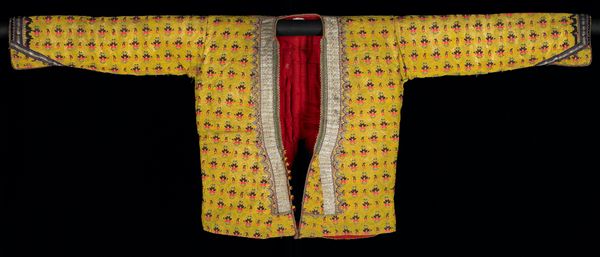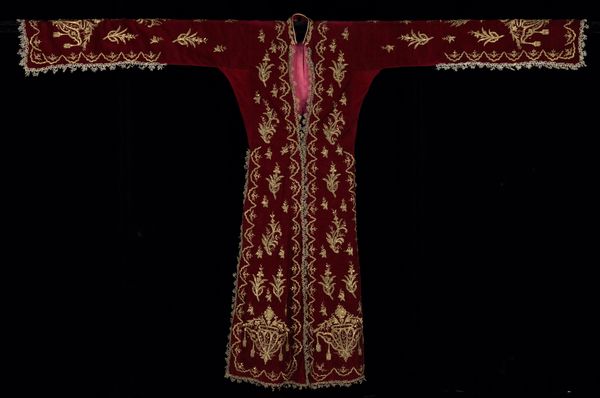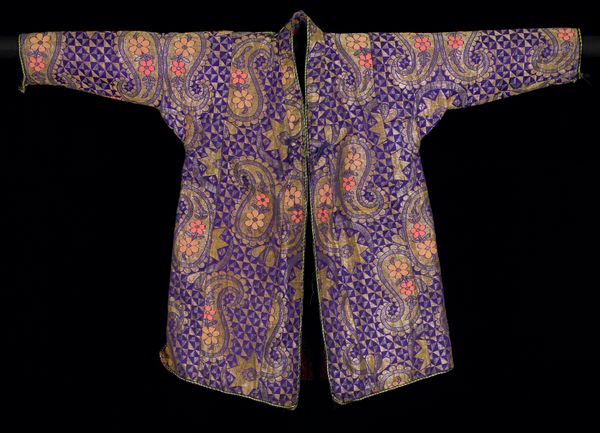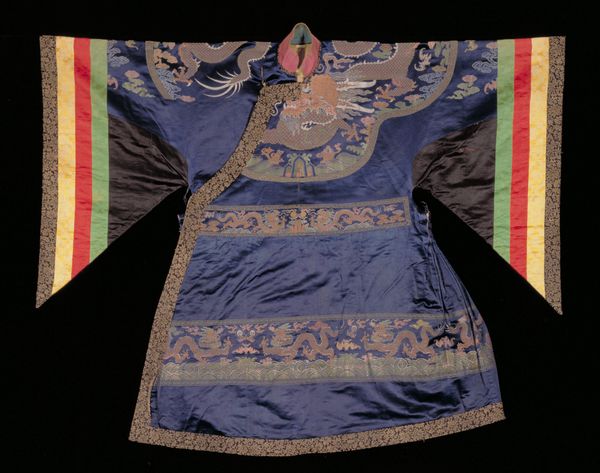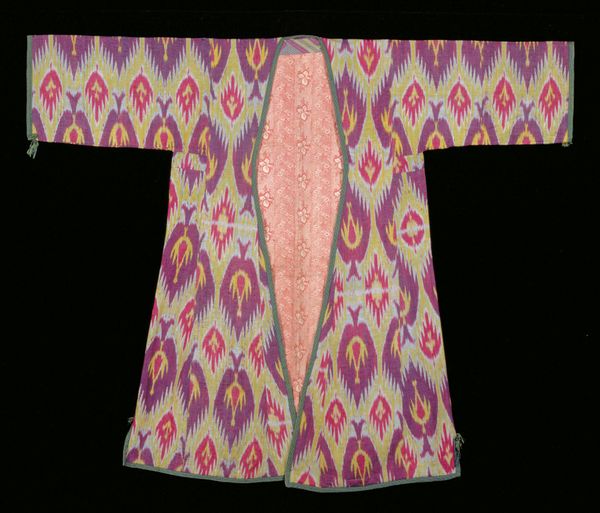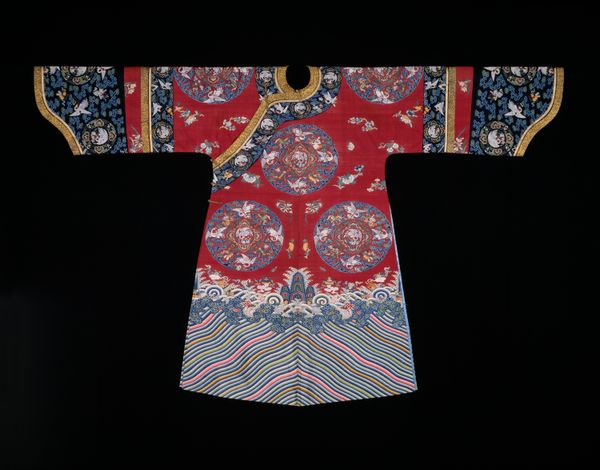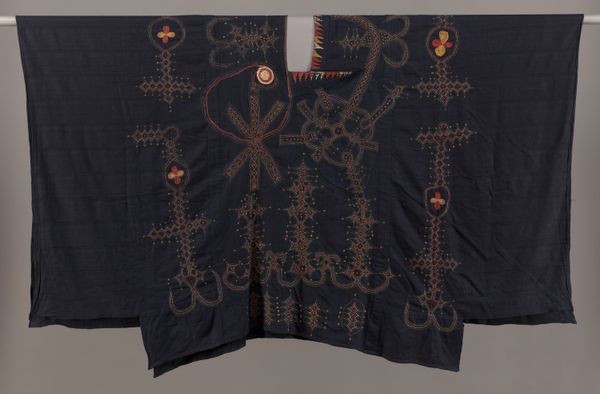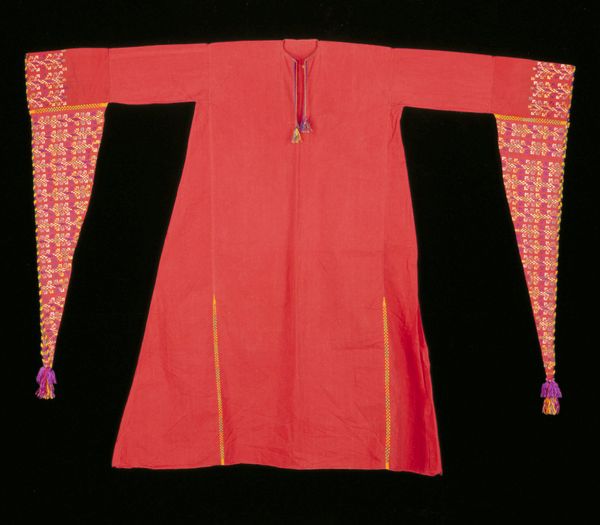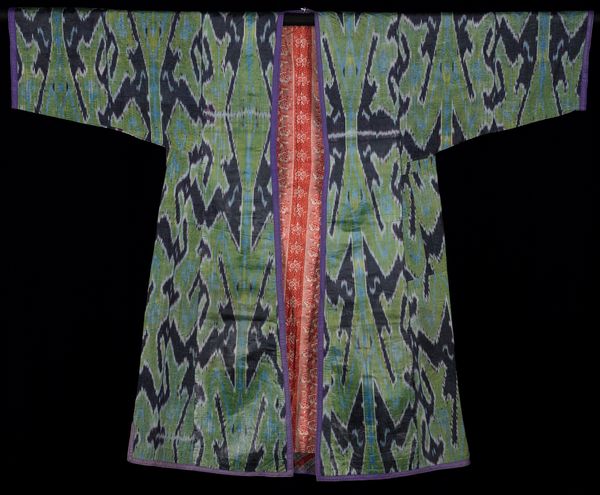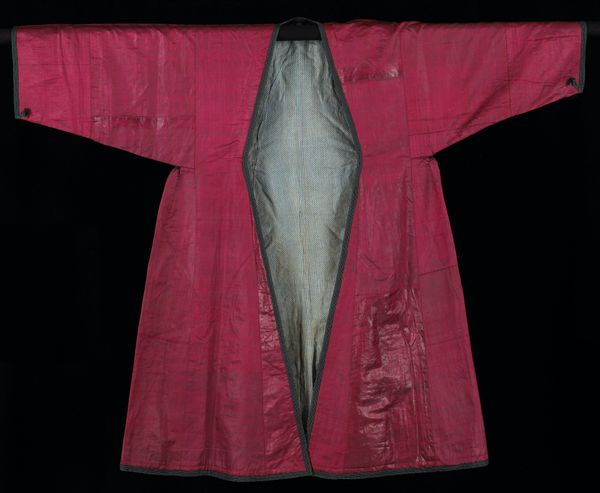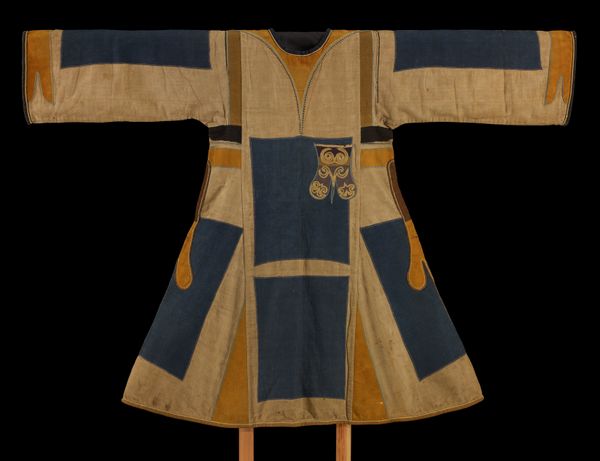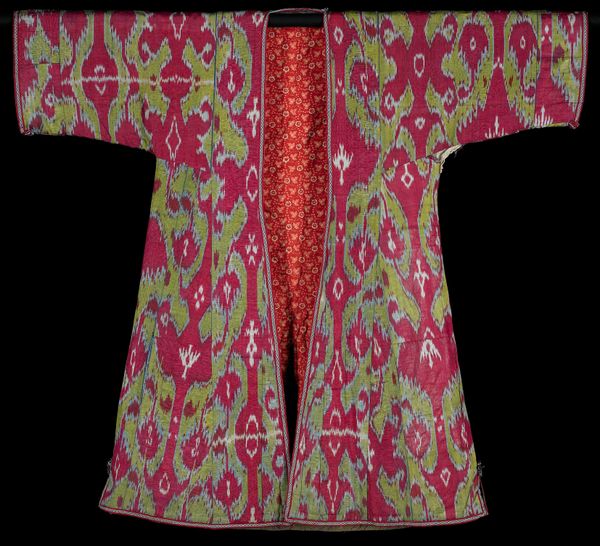
silk, textile, cotton
#
silk
#
textile
#
embroidery
#
cotton
#
islamic-art
#
textile design
#
decorative-art
Dimensions: 42 9/16 x 60 in. (108.1 x 152.4 cm)
Copyright: Public Domain
This caftan, made by an anonymous artist, is a journey into texture and color, a sort of wearable painting. I'm really drawn to how the light plays on that luscious purple velvet. The way the fabric folds and drapes creates these shifting planes of dark and light, almost like an abstract expressionist painting. And then you have those ornate gold borders, adding this touch of regal elegance. Focusing on the sleeve, you can see the intricate embroidery, these swirling patterns that hint at something ancient and mysterious. It's a real testament to the time and skill that went into this piece. Thinking about process, it really feels like artmaking, like painting, is a kind of conversation across generations. When I see this, I think of Hilma af Klint, another artist who delved into the world of abstraction, searching for hidden meanings through her own visual language.
Comments
minneapolisinstituteofart almost 2 years ago
⋮
Moroccan textiles and garments represent layers of aesthetic influences over the centuries, including Islamic, Jewish, Spanish, French, and Turkish. The elaborate gold cording and embroidery on this purple velvet caftan recall the influence of the Ottoman Empire in North Africa. Many specialists were involved in the making of this kind of luxury garment, worn at a formal court appearance or an elaborate social party - a designer for the decorative motifs, a maker of gold thread, an embroiderer, a craftsman for the metal buttons, and a tailor who would assemble the completed garment.
Join the conversation
Join millions of artists and users on Artera today and experience the ultimate creative platform.
